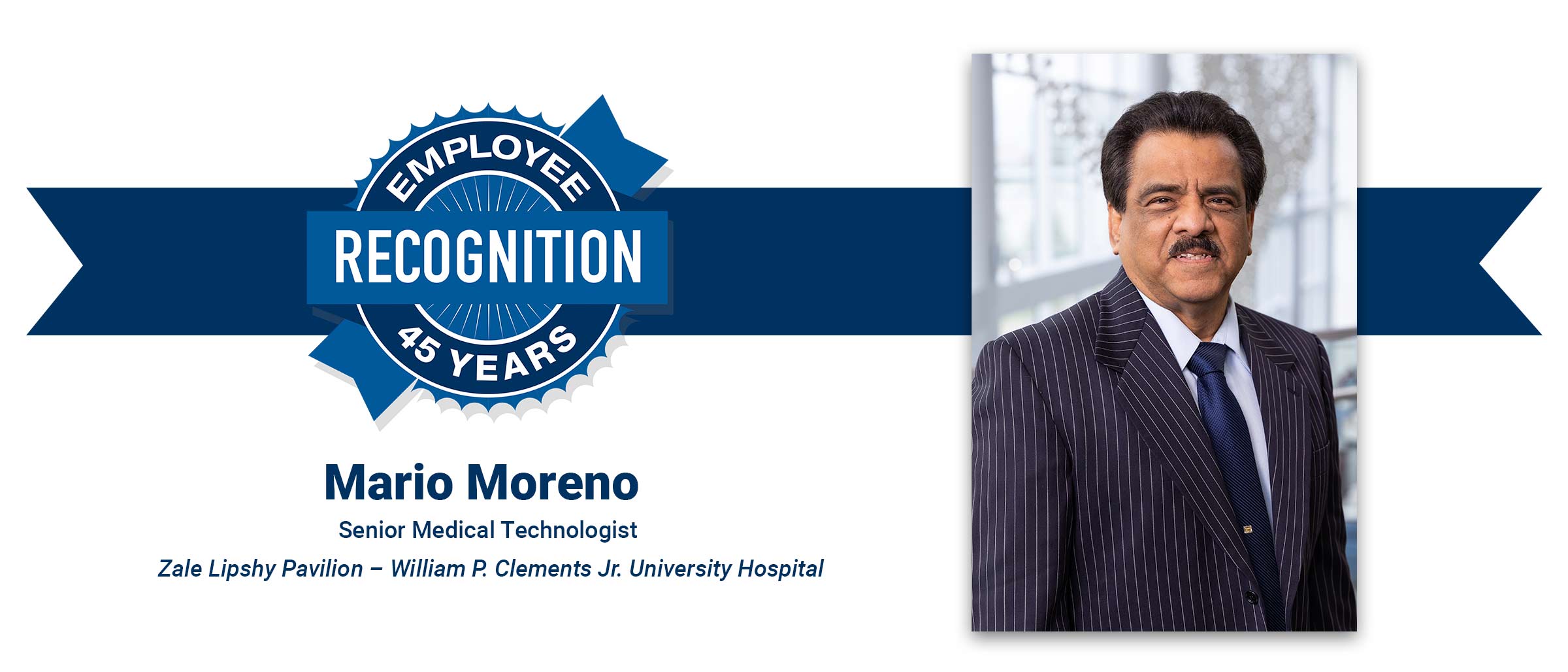Watching medical technology evolve over four decades

Mario Moreno, a Senior Medical Technologist at Zale Lipshy Pavilion – William P. Clements Jr. University Hospital, says when he started his job in 1977, he could not have envisioned the state of medical technology that exists today.
“The work has changed so much over the years,” says Mr. Moreno, 68. “For one thing, there were no computers when I started working. Everything was done manually. Everything was written on paper, and the reports were delivered to the floors on paper.
“And the testing technology was low-tech. It could take hours to get results on a test. Now we put a blood sample in a machine, and in 10 or 15 minutes we have our results.”
While the way duties were completed evolved dramatically over those 45 years, Mr. Moreno’s hours have not.
When he finished his medical technology training at the former St. Paul University Hospital, Mr. Moreno was immediately offered a job on the night shift. And although he was hesitant to join the world of midnight oil burners, four decades later he’s still working 10 p.m. to 6:30 a.m.
In the beginning, there were advantages to working the night shift. It was quieter, with fewer tests requested back then. But that is not the case these days, since it is much busier now.
Mr. Moreno had been assigned the night shift for several years when he married his wife of 42 years, Mary Jane.
“In the beginning, she was hoping I would change to a day shift. But it worked out for us. She was a teacher, and I would sleep during the day while she was at work. Then we had the evening hours together, just like any couple.”
When their three children were young, Mr. Moreno’s work schedule was seven days on and seven days off, which allowed the couple to save money on child care.
A sense of humor and patience are qualities that enabled Mr. Moreno to thrive in his job for so long.
“I think most would describe me as the funny guy. And not just in looks,” he quips. “Even though I take my job very seriously, I have always been the one to crack the jokes and lighten the mood for all those around me.”
Patience, he says, is the most important attribute in success at anything. “No matter how hard or how difficult something may seem, if you remain calm and patient, the right solution will eventually present itself,” Mr. Moreno says.
His seven grandchildren, ranging in age from 10 months to 14 years, are the lights of his life. “I’m sure other grandparents would agree that grandkids are even more fun than raising our own,” he says.
Fortunate to live near all of his grandchildren, Mr. Moreno enjoys keeping up with their school and sports activities.
He is energized by young people in general, he says, including junior colleagues. “Their enthusiasm at seeing something as new and interesting that I take for granted is refreshing,” he says.
“A good many of my co-workers were not even born when I started working here. That is an amusing perspective on my age. Some have referred to me as the ‘lab dinosaur.’ To think that we have gone through nine U.S. presidents since I began working here is a bit mind-boggling.”
Frequently, Mr. Moreno says, he does get asked when he plans to retire.
“I always reply with a smile that retiring is something that ‘old people’ do. It has been a fun 45 years, and I am looking forward to the next 45,” he says.

